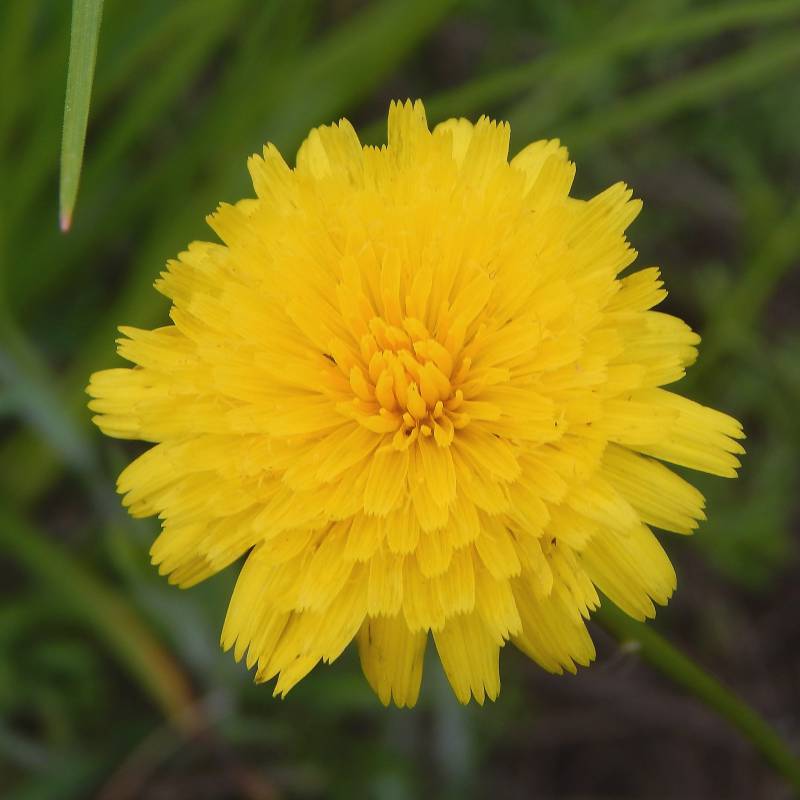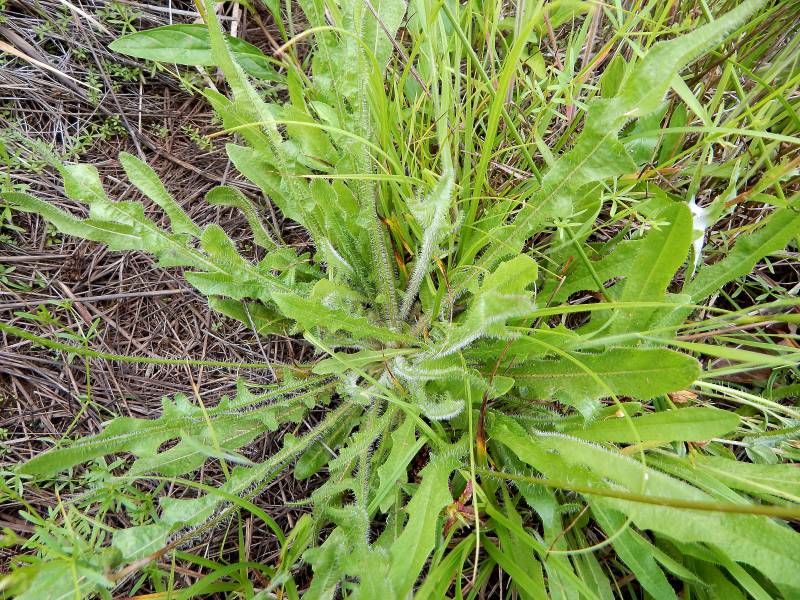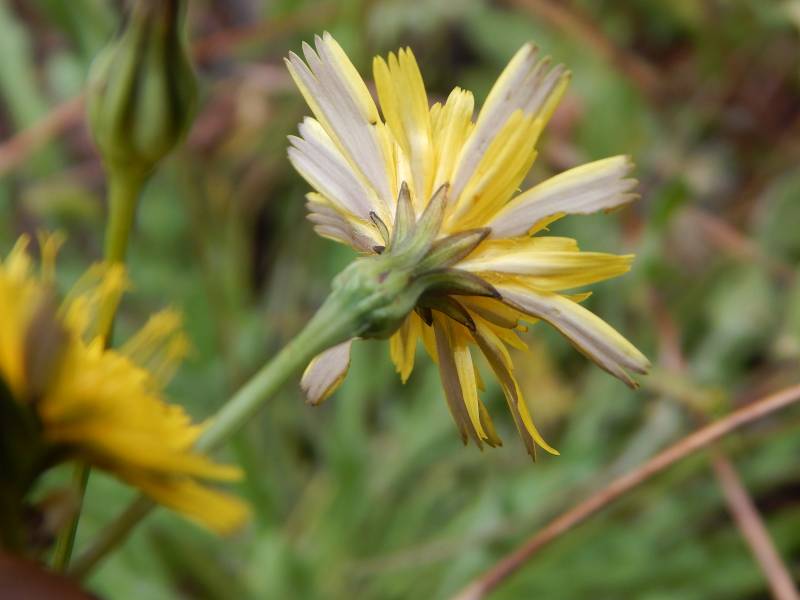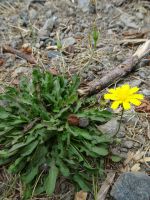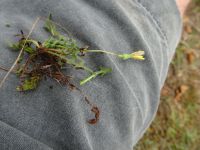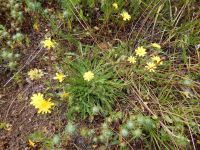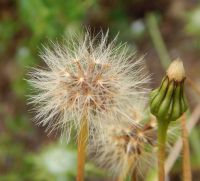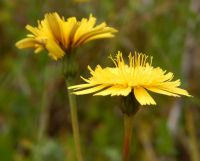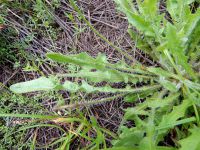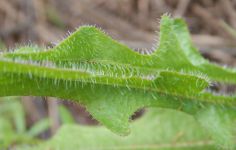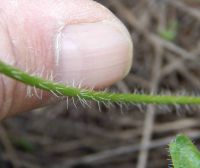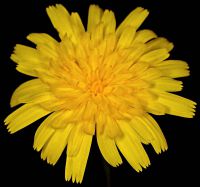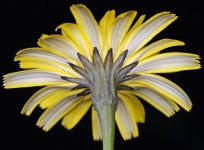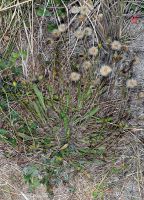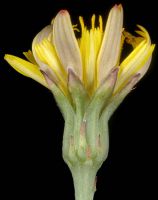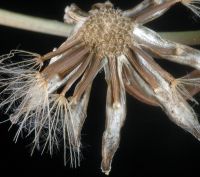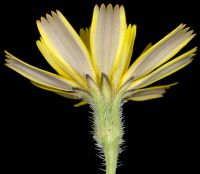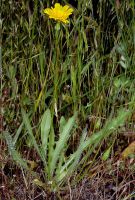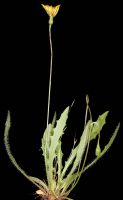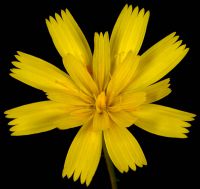Distribution: Occurring chiefly west of the Cascades crest in Washington; British Columbia to California, Nevada, and Arizona, also in central and eastern North America.
Habitat: Roadsides, meadows, wastelots, and other disturbed, open areas.
Flowers: July-September
Origin: Introduced from Europe
Growth Duration: Annual, Perennial
Conservation Status: Not of concern
Pollination: Bees, flies, beetles, wasps
Annual or perennial herbs with milky juice, the 1-15 stems ascending, simple, glabrous or with coarse, pointed hairs.
Leaves basal, the blades oblanceolate to oblong, 2-15 cm. long and 0.5-2.5 cm. wide, the margins entire, dentate, or deeply lobed, the faces with stiff hairs.
Heads single and terminal on the scapes, the peduncles ebracteate; involucral bracts sub-equal, narrowly lanceolate, 16-20, 6-8 mm. long, with 10-16 awl-shaped bractlets 1-4 mm. long; flowers 20-30, the corollas bright yellow to grayish-yellow, all ligulate, 8-15 mm. long; pappus of 2 types u00e2u20acu201c on outer achenes, crowns of bristle-like scales 0.5 mm. long; on inner achenes, dusky white or pale yellow plumose bristles 5-6 mm. long.
Achenes spindle-shaped, 4-5.5 mm. long, the outer curved, thick, not beaked, the inner with beaks 1-3 mm. long.
Publication: Fl. Franç. 2: 115. 1779.
-
ssp. saxatilis – lesser hawkbit
 Occurring chiefly west of the Cascades crest in Washington; British Columbia to California, Nevada, and Arizona, also in central and eastern North America.
Occurring chiefly west of the Cascades crest in Washington; British Columbia to California, Nevada, and Arizona, also in central and eastern North America.
PNW Herbaria: Specimen records of Leontodon saxatilis in the Consortium of Pacific Northwest Herbaria database
WA Flora Checklist: Leontodon saxatilis checklist entry
OregonFlora: Leontodon saxatilis information
E-Flora BC: Leontodon saxatilis atlas page
CalPhotos: Leontodon saxatilis photos

